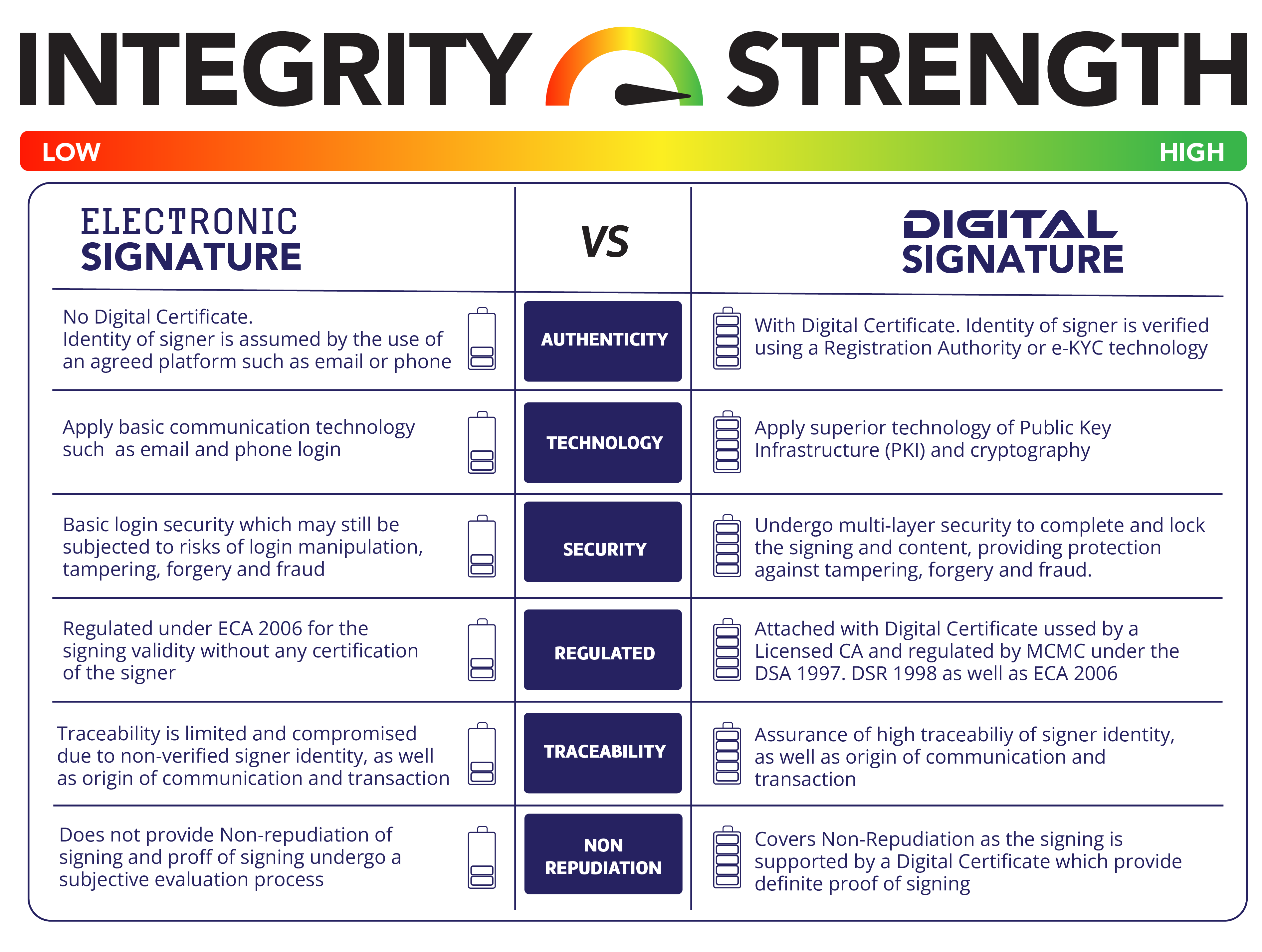Digital Signature
Digital Signature is a technology-enhanced electronic signature giving it higher security and integrity. Digital Signature is used to verify the identity of the sender/signer of a message and also to ensure the tamper-proof accuracy and validity of information in electronic/online communications and transactions.
The use of a regulated digital signature solution can fulfil requirements of confidentiality, identity authentication, non-repudiation, and integrity of an information.
A Digital Signature can be in the form of any mark such as the signature image itself, or a company seal, as the identifying and verification rest on the Digital Certificate attached to it.

Why Digital Document Signing?
Here are some of the benefits of Digital Document Signing
- AUTHENTICATED identity and origin of the signees. Proper due diligence is conducted to verify the signees; either by a Registration Authority or an e-KYC application.
- INTEGRITY assurance of entities to the signing, content of the document being signed, and transactions being performed.
- TRACEABILITY of the signing entities, communication and transaction, as well as the regulated provision of Date-Time Stamp.
- PROTECTED against identity manipulation, data leakage, document tampering, transaction fraud and other cyber threats.
- TAMPER-PROOF digital identity and document content.
- MULTI-LAYER SECURITY using Public Key Infrastructure (PKI) and cryptography technology.
- LEGALLY BINDING and regulated under the Digital Signature Act 1997 (DSA 1997), Digital Signature Regulations (DSR 1998) and Electronic Commerce Act 2006 (ECA 2006).
- NON-REPUDIATION provision under the DSA 1997, providing assurance against dispute.
- TIME & COST EFFICIENT with round-the-clock accessibility and paperless communication and transaction.

HOW TO VERIFY A DIGITAL SIGNATURE?
A digitally signed document is meant to be shared digitally or online, where document receivers can immediately recognise and verify
that the document is intact without tampering, and can easily click on the signature image/mark to reveal the signature properties and also
the Digital Certificate attached to the Digital Signature.
However, if the digitally signed document is required to be printed for the purpose of physical submission or records, a QR Code can be
attached to the digitally signed document to allow for QR Code scanning in order to reveal the actual document.
This will require:
1. downloading the CA QR Code Scanner for free from the Apple Store OR Google Play Store;
2. performing eyeballing between the fetched original (from scanning the QR Code) and the physical document at hand.
WHY DO WE NEED TO VERIFY A DIGITAL SIGNATURE?
Verification provides the assurance:
1. that the document has not been tampered post-signing
2. that the Digital Signature was performed with a valid Digital Certificate (not expired at the time of signing)
3. of the signing act itself, such as date and time of signing, location, and purpose, as well as other relevant details.

